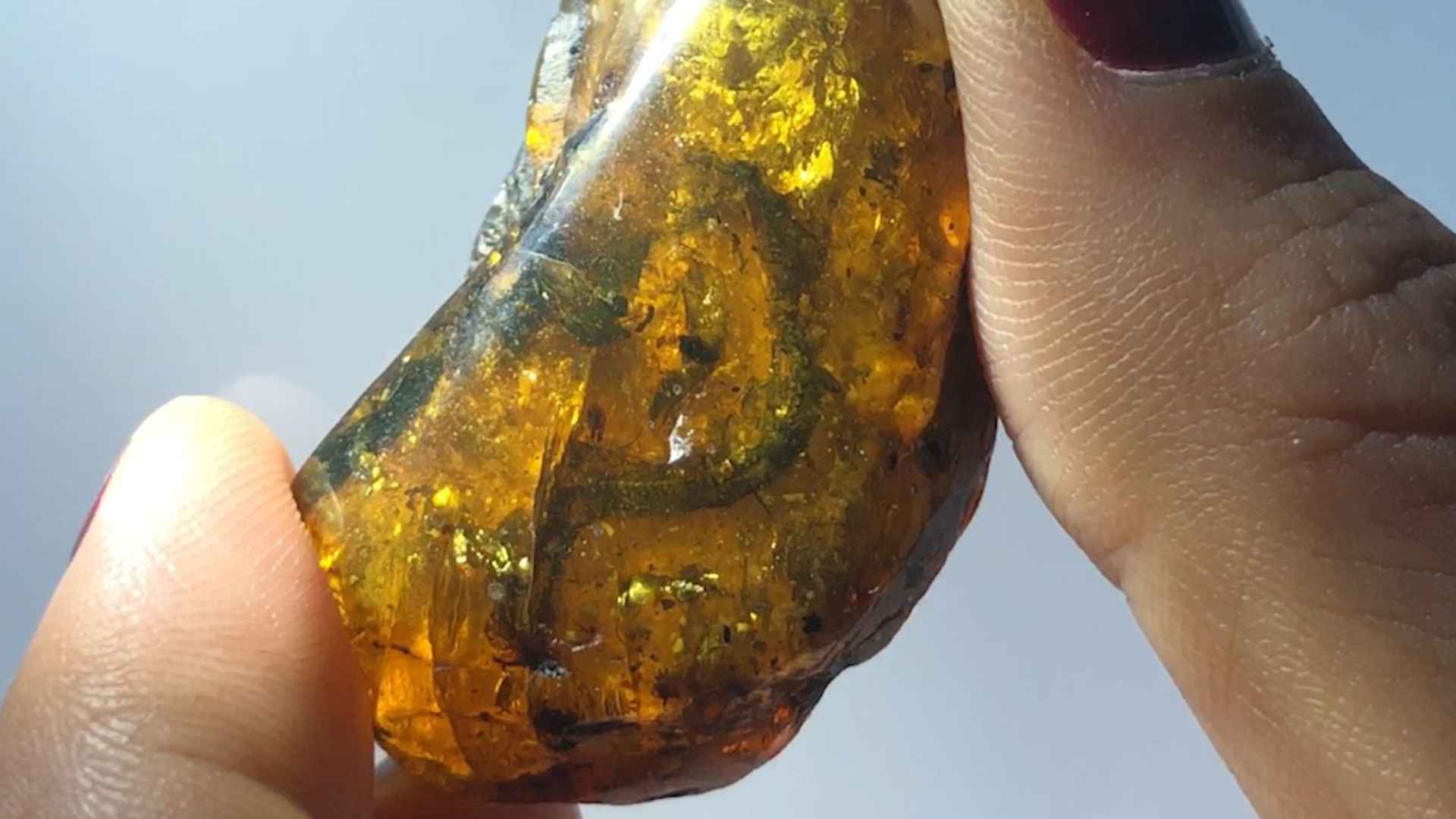One ordinary walk on Germany’s Baltic coast ended with a once-in-a-lifetime discovery. The light chunk Britta Krause almost kicked aside turned out to be ancient amber now under intensive study by paleontologists.
Last month on Lindhöft Beach, Krause spotted what looked like battered plastic poking through the sand. Curiosity won: she picked it up, noticed its honey tint and feathery weight, and wondered, Could trash really feel this strange? Within hours the suspected litter was in the Geological Museum of Kiel, where researcher Matthias Alberti confirmed it was authentic amber formed roughly 35 million years ago.
How a casual beach walk led to a surprising prehistoric discovery scientists are calling a lucky break
Krause’s find highlights how easily valuable fossils hide in plain sight. The Baltic Sea is famous for washing up amber, but most pieces are pebble-sized chips. This palm-sized specimen could preserve insects, leaves, or pollen—tiny time capsules that help scientists rebuild ancient ecosystems. “It’s light enough to float, yet heavy with stories,” Alberti told local media.
The simple tests scientists used to confirm the find was genuine amber and not modern plastic waste
Before announcing the discovery, Alberti ran three quick lab checks. Looking to try them yourself during your next seaside vacation?
| Verification test | Method in plain English | Result for Krause’s specimen |
|---|---|---|
| Salt-water float | Amber floats; plastic often sinks | Floated steadily |
| Ultraviolet glow | True amber shows blue-green fluorescence | Glowed sea-green |
| Fingernail scratch | Amber dents; plastic stays rigid | Surface dented |
These low-tech steps ruled out imitations long before costly scans begin. Pretty neat, right?
Why this 35-million-year-old resin fossil matters for modern paleontology research and climate-change modeling today
Unlike rock fossils, amber can trap entire organisms in pristine detail. CT scans planned this summer may reveal extinct beetles or pollen grains, giving clues about Eocene climate swings and biodiversity. That data feeds computer models tracking how warmer, greener periods shaped Europe—vital context as today’s temperatures rise again.
Could you be the next lucky beachcomber to spot hidden fossils worldwide while enjoying a simple shoreline walk?
If you stroll Atlantic or Gulf beaches in the United States, watch for pale yellow lumps with matte surfaces—especially after storms. Not sure what you’ve found? Museums welcome potential fossils; even a “false alarm” helps map where natural treasures drift ashore. Who knows, maybe your beach day will rewrite part of Earth’s history.
Bottom line: one inquisitive glance turned discarded “garbage” into a scientific goldmine. Keep your eyes open, ask questions, and never underestimate a strange object at your feet—paleontology’s next breakthrough might be waiting in the sand.

